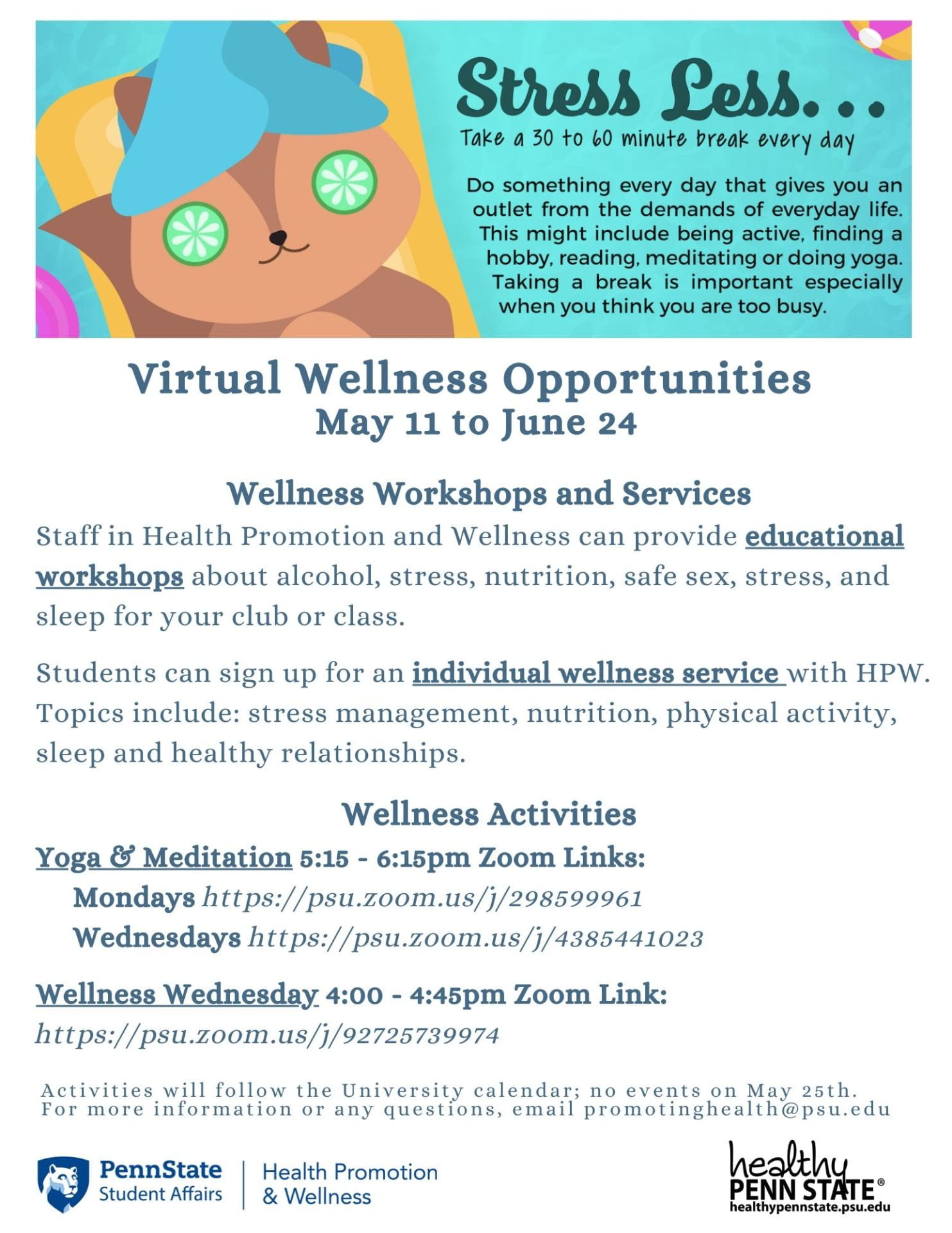Wellness Opportunities now through June 24th
Wellness Workshops and Services
- Staff in Health Promotion and Wellness can provide educational workshops about alcohol, stress, nutrition, safe sex, stress, and sleep for your club or class. Students can sign up for an individual wellness service with HPW. Topics include: stress management, nutrition, physical activity, sleep and healthy relationships.
Wellness Activities
- Yoga & Meditation 5:15 – 6:15pm Zoom Links:
- Mondays https://psu.zoom.us/j/298599961
- Wednesdays https://psu.zoom.us/j/4385441023
- Wellness Wednesday 4:00 – 4:45pm Zoom Link: https://psu.zoom.us/j/92725739974
